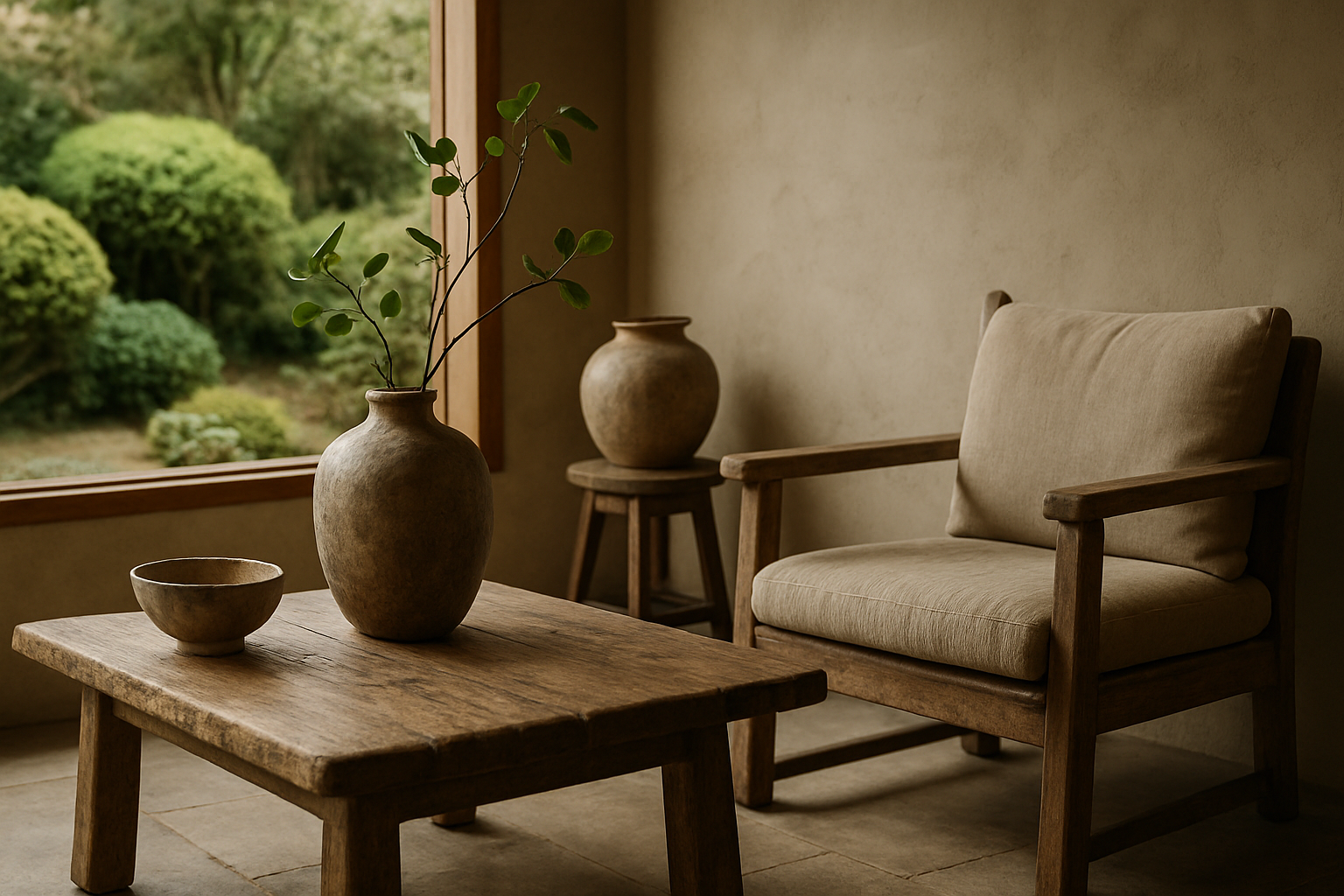Wabi-Sabi: The Art of Imperfect Beauty in Home Design
In a world obsessed with perfection, a gentle revolution is taking place in home interiors. Wabi-sabi, an ancient Japanese philosophy celebrating the beauty of imperfection, is finding its way into modern homes, offering a refreshing counterpoint to sleek minimalism and polished aesthetics. This timeless approach to design invites us to embrace the charm of worn surfaces, organic forms, and the subtle poetry of everyday objects.

The Origins and Philosophy of Wabi-Sabi
Wabi-sabi’s roots can be traced back to 16th century Japan, where it emerged as a reaction to the prevailing aesthetic of ornate, perfect, and symmetrical beauty. The term wabi originally referred to the loneliness of living in nature, away from society, while sabi meant withered or lean. Over time, these concepts evolved to embody a more positive outlook on simplicity, impermanence, and imperfection.
In the context of home design, wabi-sabi encourages us to find beauty in the modest, the rustic, and the melancholy. It’s about appreciating the passage of time and the stories told by objects that have been loved and used. This philosophy stands in stark contrast to the disposable culture of fast furniture and trend-driven decor, offering instead a more sustainable and mindful approach to creating our living spaces.
Incorporating Wabi-Sabi Elements in Modern Homes
Bringing wabi-sabi into your home doesn’t mean completely overhauling your space. Instead, it’s about cultivating a mindset that values authenticity over perfection. Start by embracing natural materials like wood, stone, and clay. Look for pieces with visible grain, knots, or irregularities that speak to their organic origins.
Consider introducing handmade items into your decor. Artisanal ceramics, hand-woven textiles, and furniture crafted by local makers all carry the imperfect touch of human hands. These pieces not only add character to your space but also support sustainable, small-scale production.
Color palettes in wabi-sabi interiors tend to be muted and earthy, reflecting the subtle hues found in nature. Think warm greys, soft browns, and gentle greens. These subdued tones create a calming atmosphere and allow the textures and forms of your objects to take center stage.
The Art of Curating Imperfection
One of the key principles of wabi-sabi is the idea of ma, or negative space. In home design, this translates to a less-is-more approach, where each item is given room to breathe and be appreciated. Rather than filling every surface with decor, choose a few meaningful pieces and allow empty space to frame them.
Embrace the concept of kintsukuroi, the Japanese art of repairing broken pottery with gold. Instead of discarding items that become chipped or cracked, consider mending them in a way that highlights their history. This practice not only extends the life of your belongings but also adds a unique story to your decor.
When selecting furniture and decor, look for pieces that show signs of age and use. A vintage wooden sideboard with a patina of scratches and marks tells a story of gatherings and daily life. An antique mirror with slightly clouded glass adds depth and mystery to a room. These imperfections give your space a sense of history and lived-in charm.
Wabi-Sabi in the Garden: Embracing Natural Rhythms
The principles of wabi-sabi extend beautifully to outdoor spaces, encouraging a more relaxed and naturalistic approach to gardening. Instead of striving for manicured perfection, allow your garden to embrace the cycles of growth, decay, and renewal.
Choose plants that are native to your region and well-adapted to local conditions. These species not only require less maintenance but also create a stronger connection to your local ecosystem. Embrace the beauty of wildflowers, allowing them to self-seed and create natural drifts of color.
Incorporate weathered elements into your garden design. A rusted iron gate, moss-covered stones, or a wooden bench that has silvered with age all embody the wabi-sabi aesthetic. These elements serve as reminders of nature’s ongoing processes and the passage of time.
The Psychological Benefits of Wabi-Sabi Spaces
In our fast-paced, digital world, wabi-sabi offers a much-needed antidote to the pressures of perfection. Living in a space that embraces imperfection can have profound effects on our well-being. It encourages mindfulness, asking us to slow down and appreciate the subtle beauty around us.
Wabi-sabi interiors often feel more relaxed and welcoming than their perfectly styled counterparts. By removing the pressure to maintain an immaculate space, we create room for genuine living and meaningful experiences. This approach to home design can reduce stress and foster a deeper sense of contentment with our surroundings.
Moreover, the wabi-sabi philosophy encourages a more sustainable approach to consumption. By valuing objects that age gracefully and repair as part of their story, we move away from the cycle of constant replacement and waste.
As we navigate an increasingly complex world, the simplicity and authenticity of wabi-sabi offer a refreshing perspective on what makes a home truly beautiful. It reminds us that our living spaces are not static showrooms, but dynamic environments that reflect the ebb and flow of life. By embracing imperfection, we open ourselves to a deeper appreciation of the present moment and the quiet poetry of everyday existence.





